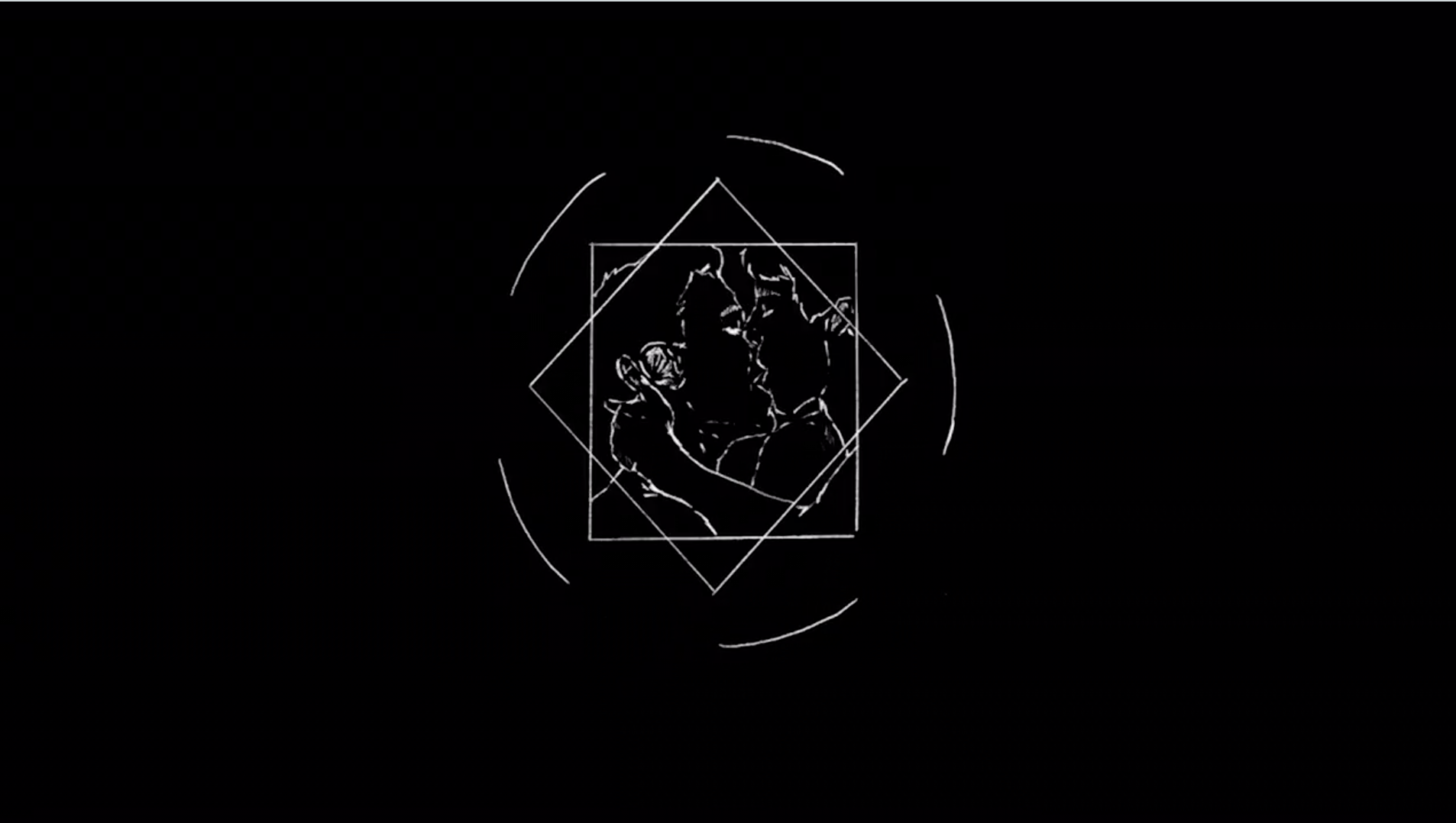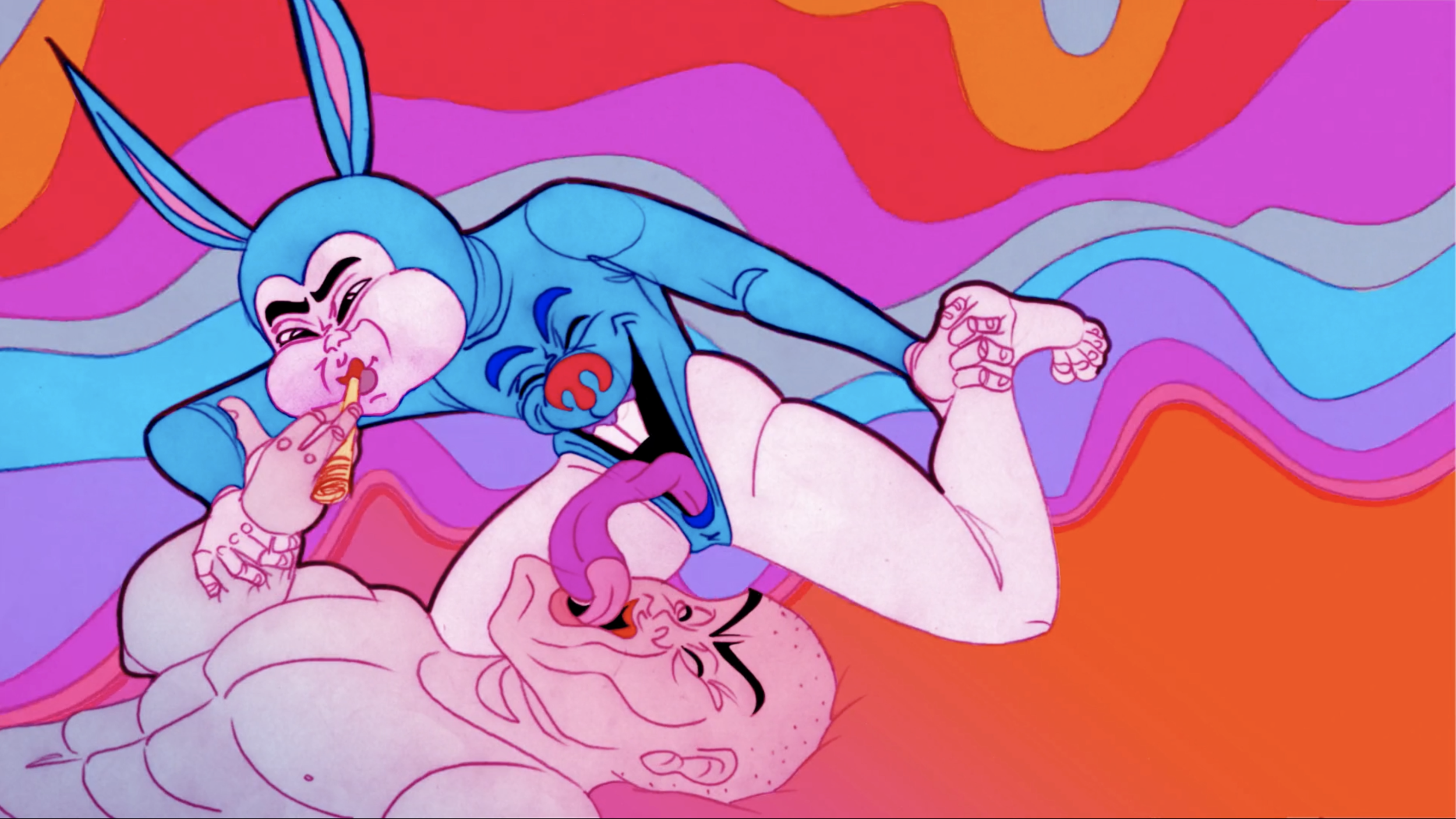A Queer Thing, Indeed: Queering Experimental Animation
In recent years, a number of scholars have pointed out the applicability of the concept of queerness to different forms of animation (Wood 2008; Halberstam 2011; Maier 2018; Ruberg 2019; Ruberg 2020). As Kodi Maier (2018) has suggested on this very blog, fantasy/animation and queerness are all connected by the ways in which they bend, break and question our concepts of the real and the normal, respectively. Maier (2018) proposes that animation falls along a sort of spectrum of queerness, where the more realistic forms fall on one extreme and the more fantastical and bizarre fall on the other. According to this logic, experimental animation, with its tendency to “bend, break and question” the conventions of animated narrative and representation, might be considered the queerest of all animated forms. Indeed, I’ve always found experimental animation to be a queer art form. I see it as queer in terms of its potential for radical freedom of form and expression and its position as counter to conventional animation practices. It is queer in the ways that it resists codification and has always refused to settle into a definition or to sit comfortably within systems of capital. It is queer in its perverse expenditure of labour for non-commercial ends and in the conceptual and perceptual challenges it presents to its viewers.
Queerness exists in experimental animation’s use of abstraction and elliptical narrative, its unconventional approach to visualising ideas, and the odd and extraordinary experiences that it can elicit. It’s queer in its unabashed strangeness and opacity, and in the ways that each artist’s work presents its own idiosyncratic aesthetic, formal and conceptual logic that demands that we “develop new standards of judgment and […] even new aesthetic attitudes” to engage with it (Russett and Starr 1988, 11). There is kinship between queer theory’s radical critical position in relation to cisheteropatriarchy and what I have argued is experimental animation’s critical rejection of “the various aesthetic and conceptual limitations of dominant commercial and cultural practices” (Husbands 2019, 48). In these ways, experimental animation neatly aligns with Eve Kosofsky Sedgwick’s (1994, 7) notion that queer representations are “experimental linguistic, epistemological, representational, political adventures.”
However, I would like to point out that there is most definitely room for caution in discussing the queerness of experimental animation on such an abstract level. For one thing, it risks stretching the term “queer” beyond its “definitional center” (Sedgwick 1994, 8)—firmly rooted in explorations of gender and sexuality—and the potential political power that it wields. Looking at experimental animation through a queer lens is in some ways problematic because historically, with a few important exceptions[1], especially canonical experimental animators have largely been straight, white, middle class and/or (cis) male. Even with the diversification of the practice in the late 1960s and the rise in feminist autobiographical animations in the 1970s and 80s, experimental animations with explicitly queer content, made by queer-identified artists, have been few and far between. But what excites me in thinking about queerness and experimental animation in a contemporary context, and what I have seen in the rise in explicitly queer experimental work over the last decade—often made by young, up-and-coming animators—is the blending of these aforementioned “queer” characteristics of experimental animation with explicitly queer issues of representation, using these techniques and formal attitudes to explore queer identities, bodies and experiences.
Animation offers artists the virtually infinite potential for the manifestation of desire, fantasy, interiority and intimacy. Animators have the ability to translate feelings and ideas into signification and to play with those signs so that they are as complex, metamorphosing and elusive as the often feel in real life. Experimental forms of animation have long appealed to individual artists who are keen to explore the furthest reaches of animation’s expressive possibilities, and the practice offers to queer artists in particular a potential outlet for radical self-determination. As Akira Mizuta Lippit (2012, 154-156) notes, “like dreams, phantasies serve as opportunities to fulfil wishes, to revise one’s experience of the empirical world,” and experimental moving image works, “which frequently foreground the enunciation of the individual or subject, complicate the machinery of phantasy and expand it.” Experimental animation offers a suitably queer sort of self-determination, conveyed through its fantastic, subversive, indeterminable and abstract languages. It enables queer artists to manifest, celebrate, interrogate, sublimate (or obfuscate) non-heteronormative feelings, desires and ways of being. Recent examples include David Delafuente playing with rotoscoped body fragments to explore late night fantasies in uuuuuu (2015) (Fig. 1). Youyang Yu’s For the Best (2015) (Fig. 2) is a poetic meditation on the anguishes of unrequited love for a straight friend, and in Lotus Lantern (2017) (Fig. 3), Calvin Xingpei Shen pays homage to Suzan Pitt’s Asparagus (1979) as he dreamily explores his queer identity and Chinese heritage in a tribute to the singer Zhou Xuan. Sara Koppel’s cartoon style 1st Day & Next Minute (2017) (Fig. 4) offers a quick-fire portrait of a genderqueer punk rock family, featuring a bunny leotard with a functioning phallic tongue, and Barry Doupé’s Distracted Blueberry (2019) (Fig. 5) is a 4.5-hour 3D animation that explores male homosexuality in the form of an absurdist, abject, symbolic and ultraviolent psychosexual fantasy. Cheng-hsu Chung’s 6-minute, hand painted experimental animation Adorable (2018) (Fig. 6) draws from his personal experiences and fantasies as a queer person of colour learning to navigate his sexuality and contemporary queer culture through pornography, dating apps, drugs, drag and nightclubs. Chung’s fluid animation style is characterised by metamorphosing bodies and spaces that are reminiscent of works by experimental animators such as Georges Schwizgebel and James Duesing. Adorable shifts vertiginously and seamlessly from scene to scene, journeying from “oppressive isolation to extreme liberation” (Hammond 2018) whilst signalling racism, gender identity, body dysmorphia and gay ecstasy along the way.
This idea of queer signs and signification in experimental animation raises questions about the importance of visibility, and the political efficacy of abstraction and indeterminacy as aesthetic modes of expression. Indeterminacy is, to some degree, a privilege. It presupposes the acceptability of being misunderstood—something that is not always a given in relation to queer identities in the real world. However, one of the ways that I think indeterminacy can function productively in queer experimental animations is in the kind of spectatorship that it can elicit. I argued in my chapter in Fantasy/Animation that experimental techniques tend to destabilize habitual perception and cognition, challenging viewers to actively participate in their comprehension of a work. I noted that the “sensory and cognitive responses and identificatory urges that [they] can elicit are inextricably linked to our imaginative faculties”, calling this phenomenon “fantastical empathy” (Husbands, 2018, 75). I believe that fantastical empathy applies in these cases, as well. Indeterminacy in experimental animation can disarm a viewer, forcing them from their comfortable viewing position and requiring them to meet the work on its own terms. In this way, it can offer viewers glimpses of what it feels like to be outside the norm, perhaps invoking the thrilling freedoms of queerness as well as its frustrations and anxieties. Examples of this might be found in encounters with Jordan Wong’s animations Ugly But Good (2016) (Fig. 7) or Mom’s Clothes (2018) (Fig. 8), which bombard us with largely abstract imagery whilst holding us spellbound with rhythmic, poetic voiceovers, inviting us to take part in their insistent yet subdued crises du cœur. The slipperiness between image and words makes these viewing experiences all the more intimate. A queer thing, indeed, and a fantastic one.
**Article published: February 19, 2021**
Notes
[1] Exceptions like Barbara Hammer and Wrik Mead are relatively straightforward, but the situation is more delicate when it comes discussing experimental animators who were queer in their private lives but not widely known as queer filmmakers/animators during their lifetimes, such as Norman McLaren. The sexual orientations of many older animators/artists are simply not known, and sexual preference’s relevance to interpretations of their work is very much under debate.
References
Halberstam, J. 2011. The Queer Art of Failure. London: Duke University Press.
Hammond, Benjamin. 2018. “Watch a hallucinatory animation about queer sexuality.” Dazed, October 11. https://www.dazeddigital.com/art-photography/article/41765/1/cheng-hsu-chung-animation-adorable-queer-sexuality-lgbtq-history
Husbands, Lilly. 2018. “Fantastical Empathy: Encountering Abstraction in Bret Battey’s Sinus Aestum (2009).” In Fantasy/Animation: Connections Between Media, Mediums and Genres, edited by Christopher Holliday and Alexander Sergeant, 73-90. London: Routledge.
Husbands, Lilly. 2019. “Craft as Critique in Experimental Animation”. In The Crafty Animator: Handmade, Craft-based Animation and Cultural Value, edited by Caroline Ruddell and Paul Ward, 45-73. London: Palgrave Macmillan.
Lippit, Akira Mizuta. 2012. Ex-Cinema: From a Theory of Experimental Film and Video. Berkeley and Los Angeles: University of California Press.
Maier, Kodi. 2018. “Louis Armstrong’s Flying Head, Clothing as Food, and Renegade Angels: Queering Animation through Fantasy”. Fantasy/Animation, July 6. https://www.fantasy-animation.org/current-posts/2018/7/5/louis-armstrongs-flying-head-clothing-as-food-and-renegade-angels-queering-animation-through-fantasy
Ruberg, Bonnie. 2019. Video Games Have Always Been Queer. New York: New York University Press.
Ruberg, Bonnie. 2020. The Queer Games Avant-Garde: How LGBTQ Game Makers Are Reimagining the Medium of Video Games. Durham and London: Duke University Press.
Russett, Robert and Cecile Starr. 1988. Experimental Animation: Origins of a New Art. New York: Da Capo.
Sedgewick, Eve Kosofsky. 1994. Tendencies. London: Routledge.
Wood, Aylish. 2008. “The Animated Queer.” In Queer Cinema in Europe, edited by Robin Griffiths, 93-104. Bristol: Intellect Books.
Biography
Lilly Husbands is a Lecturer in Animation and Visual Culture at Middlesex University in London. Her research is broadly concerned with the legacy and evolution of experimental animation in the context of contemporary multimedia practice. She is an associate editor of animation: an interdisciplinary journal and co-editor of the book Experimental Animation: From Analogue to Digital (London: Routledge, 2019). Twitter @lilly_husbands








